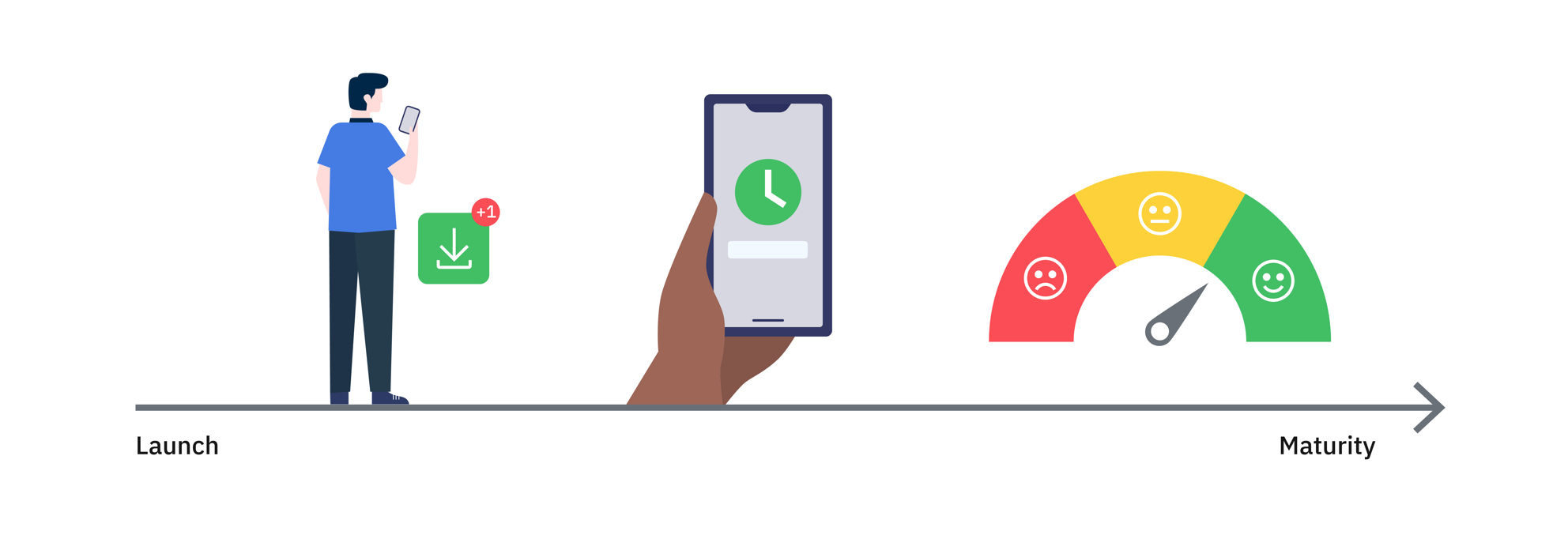Defining value with clients
What does this focus on outcomes and speed to value mean for you as a member of a Garage?
As a Garage Leader or Practitioner, your role is to identify and maximize the value that’s delivered for your clients and users through the projects you pursue. Unfortunately, there is no standard, universal way of measuring value. What value IS depends on your client’s context, and will change over time.
Value it’s a continuum, not a one-time measurement.

For example, when you launch a new mobile application, ”value” may just mean getting people to download and use the app. If you see downloads and users go up, you know your product is delivering a specific outcome (growth in users) which has value for the business (expansion of the user base, and depending on the business model, increase in revenue).
As the app grows, the definition of value may change. Users may have downloaded the app, but do they continue to use it consistently? In a post-launch context, the outcome of high, continuous usage of the app shows the business that its product is valuable to its users over time.
When you have built a solid user base, the definition of value may change again. It might become more relevant to increase user satisfaction, or find ways to increase revenue by adding other services. The outcomes you’re looking to provide, and the value you want to create, is dependent on the context of the problem with which you’re faced.
Aligning around valuable outcomes
What is valuable for your IBM Garage depends on what is valuable for your client. Opening up a dialogue with your client will help uncover the types of value they wish to prioritize. These can include, but are not limited to: ‘business value’, ‘customer value’, ‘knowledge value’, or ‘technical value’.
Caption: Examples of potential values clients may prioritize
No project can measure its impact without first defining what success looks like. What’s most important in an IBM Garage is to agree on what is valuable and actually measure and steer your engagement based on that agreement.
Continuously orient around Key Value Indicators (KVIs) and focus on the outcomes that reflect those indicators: specific, measurable, and meaningful events or changes in conditions, behavior, or attitudes that indicate progress toward delivering that value.